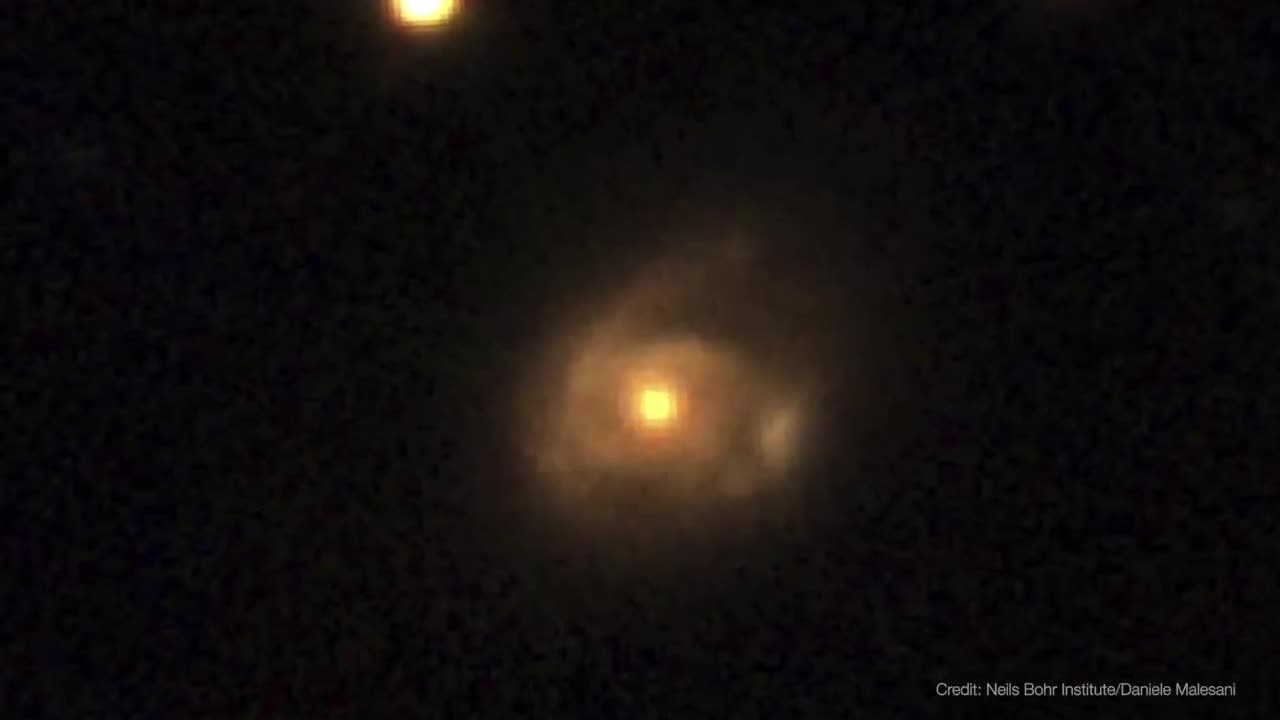Premium Only Content

Black Hole Snack Attack
Using NASA’s Neil Gehrels Swift Observatory, which launched in 2004, scientists have discovered a black hole in a distant galaxy repeatedly nibbling on a Sun-like star. The object heralds a new era of Swift science made possible by a novel method for analyzing data from the satellite’s X-ray Telescope (XRT).
When a star strays too close to a monster black hole, gravitational forces create intense tides that break the star apart into a stream of gas. The leading edge swings around the black hole, and the trailing edge escapes the system. These destructive episodes are called tidal disruption events. Astronomers see them as flares of multiwavelength light created when the debris collides with a disk of material already orbiting the black hole.
Recently, astronomers have been investigating variations on this phenomena, which they call partial or repeating tidal disruptions.
During these events, every time an orbiting star passes close to a black hole, the star bulges outward and sheds material, but survives. The process repeats until the star looses too much gas and finally breaks apart. The characteristics of the individual star and black hole system determine what kind of emission scientists observe, creating a wide array of behaviors to categorize.
On June 22, 2022, XRT captured Swift J0230 for the first time. It lit up in a galaxy around 500 million light-years away in the northern constellation Triangulum. Swift’s XRT has observed nine additional outbursts from the same location roughly every few weeks.
Scientists propose that Swift J0230 is a repeating tidal disruption of a Sun-like star orbiting a black hole with over 200,000 times the Sun’s mass. They estimate the star loses around three Earth masses of material on each pass. This system provides a bridge between other types of suspected repeating disruptions and allowed scientists to model how interactions between different star types and black hole sizes affect what we observe.
Swift J0230’s discovery was possible thanks to a new, automated search of XRT observations called the Swift X-ray Transient Detector.
After the instrument observes a portion of the sky, the data is transmitted to the ground, and the program compares it to previous XRT snapshots of the same spot. If that portion of the X-ray sky has changed, scientists get an alert. In the case of Swift J0230, astronomers were able to rapidly coordinate additional observations of the region.
-
 1:05:05
1:05:05
TheCrucible
3 hours agoThe Extravaganza! EP: 46 with Guest Co-Host: Elijah Schaffer (10/01/25)
43.7K10 -
 1:22:37
1:22:37
Kim Iversen
3 hours agoWas Tyler Robinson a Patsy? Deep Investigation Exposes the Plot Holes in the Kirk Shooting
32K31 -
 LIVE
LIVE
The Mike Schwartz Show
4 hours agoTHE MIKE SCHWARTZ SHOW Evening Edition 10-01-2025
768 watching -
 LIVE
LIVE
Mally_Mouse
7 hours ago📣Telescreen Talks - LIVE! ep. 4
95 watching -
 53:17
53:17
Candace Show Podcast
2 hours agoBREAKING NEWS: A Woman Was Seen With Charlie Kirk's Shooter | Candace Ep 246
42.8K107 -
 DVR
DVR
The Trish Regan Show
2 hours agoDisney Already REGRETS Bringing Jimmy Kimmel Back as Ratings COLLAPSE ...
2.16K9 -
 1:35:02
1:35:02
Redacted News
3 hours agoHIGH ALERT! U.S. AND ISRAEL PREPARING FOR 'LARGE SCALE' WAR, U.S. TANKERS ARRIVE IN QATAR | Redacted
125K147 -
 LIVE
LIVE
Dr Disrespect
8 hours ago🔴LIVE - DR DISRESPECT - 10 WINS ON CONTROLLER - BO7 TOMORROW
1,292 watching -
 22:48
22:48
Jasmin Laine
3 hours ago“They LIED to People”—Poilievre SLAMS Liberals as Auditor General CONFIRMS Vote-Buying Scandal
12.9K20 -
 16:45
16:45
World2Briggs
4 hours ago $0.68 earnedTop 10 Dying Cities Everyone Is Leaving in 2026
10.6K9